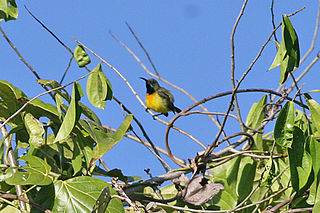 W
WThe apricot-breasted sunbird is a species of bird in the family Nectariniidae. It is endemic to the island of Sumba in Indonesia, where its natural habitats are subtropical or tropical moist lowland forests and subtropical or tropical moist montane forests. Although it is quite common, very little is known about its biology, with virtually nothing known about its breeding or diet.
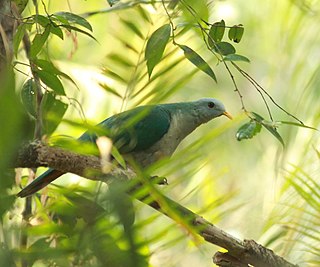 W
WThe Banggai fruit dove is a species of bird in the family Columbidae. It is endemic to the Banggai Islands. Its natural habitat is subtropical or tropical moist lowland forests. It is threatened by habitat loss.
 W
WThe black-fronted bushshrike is a passerine bird of the bushshrike family, Malaconotidae. It inhabits forests mainly in East Africa. It forms a superspecies with the many-colored bushshrike and the two are sometimes considered to be a single species.
 W
WThe black-headed greenfinch is a small passerine bird in the family Fringillidae. It is found in the Chinese province of Yunnan, northern Laos, eastern Myanmar and adjacent areas of Vietnam, Thailand and Northeast India. Its natural habitats are subtropical or tropical dry forest and subtropical or tropical dry shrubland.
 W
WThe black-ringed white-eye or lemon-throated white-eye is a species of bird in the family Zosteropidae. It is endemic to Sulawesi, Indonesia. Its natural habitat is subtropical or tropical moist lowland forests.
 W
WThe buff-faced scrubwren is a bird species in the family Acanthizidae. It is found in the highlands of New Guinea ; Its natural habitat is subtropical or tropical moist montane forests.
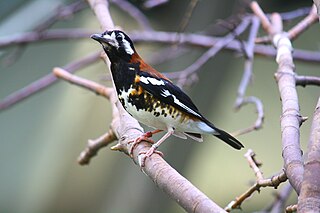 W
WThe chestnut-backed thrush is a ground thrush species endemic to Lombok, Timor and the Lesser Sunda Islands in Indonesia. The species is rapidly declining and it is already extinct on Lombok and possibly on Lesser Sunda. There are a number of European institutions that hold this species, including: Berlin Zoological Garden, Birdworld, Bristol Zoo, Royal Burgers' Zoo, Chester Zoo, Edinburgh Zoo, Durrell Wildlife Park, and Waddesdon Manor aviary. Six of these zoos have successfully bred them since October 2011 and there are now 91 of them in these institutions. Private Members of the Foreign Bird League in the UK are participating in the breeding scheme for this species and are being particularly successful.
 W
WThe collared lark or collared bushlark is a species of lark in the family Alaudidae found in East Africa.
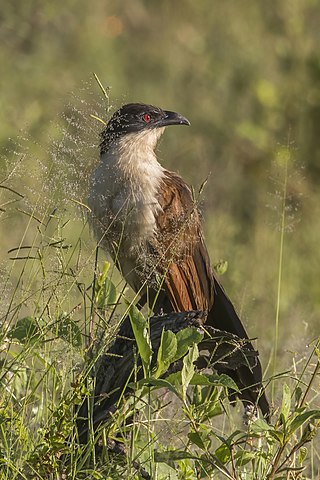 W
WThe coppery-tailed coucal is a species of cuckoo in the family Cuculidae. It is found in Angola, Botswana, the Democratic Republic of the Congo, Malawi, Namibia, Tanzania, Zambia, and Zimbabwe. It was first described by the German ornithologist Anton Reichenow in 1896.
 W
WThe coral-billed ground cuckoo, also known as Renauld's ground cuckoo, is a large terrestrial species of cuckoo in the family Cuculidae. It is found in Cambodia, Laos, Thailand, and Vietnam. Its natural habitat is tropical moist lowland forests. Its English name refers to its coral-red bill, which separates it from the two other members of the genus Carpococcyx.
 W
WThe crested white-eye or crested ibon is a species of bird in the family Zosteropidae. It is endemic to the Lesser Sunda Islands.
 W
WEdwards's pheasant is a bird of the pheasant family Phasianidae and is endemic to the rainforests of Vietnam. It is named after the French ornithologist Alphonse Milne-Edwards and first described to science in 1896 The bird's length is 58–65 centimetres (23–26 in) and has red legs and facial skin. The male is mainly blue-black with a crest, and the female is a drab brown bird. The alarm call is a puk!-puk!-puk!.
 W
WThe green-headed oriole, or montane oriole, is a species of bird in the family Oriolidae. It is found in eastern Africa.
 W
WThe Javan bush warbler is a songbird species. Formerly placed in the "Old World warbler" assemblage, it is now placed in the newly recognized family Locustellidae.
 W
WLilian's lovebird, also known as the Nyasa lovebird, is a small African parrot species of the lovebird genus. It is mainly green and has orange on its upper chest and head. It is 13 cm (5 inches) long and is the smallest parrot on mainland Africa. In captivity, it is uncommon and difficult to breed.
 W
WThe Madagascan plover, also known as the black-banded plover, is a small monogamous shorebird in the family Charadriidae, native to western Madagascar. It inhabits shores of lagoons, coastal grasslands, and breeds in salt marshes. These plovers mainly nest in open grassland and dry mudflats surrounding alkaline lakes. The species is classified as vulnerable by the IUCN because of its low breeding success, slow reproductive rate, and weak adaptation to increasing habitat loss, leading to declining population numbers.
 W
WThe Mindoro imperial pigeon, also known as Mindoro Zone-tailed pigeon, Great Mindoro pigeon or Pink-throated Imperial pigeon, is a bird species in the family Columbidae. It is endemic to the mountains of Mindoro in central Philippines.
 W
WThe orange-billed lorikeet is a species of parrot in the family Psittaculidae. It is found in New Guinea. Its natural habitat is subtropical or tropical moist montane forests.
 W
WThe painted tiger parrot is a species of parrot in the family Psittaculidae. It is mainly found in Papua New Guinea.
 W
WThe pale-shouldered cicadabird or Sumba cicadabird is a species of bird in the family Campephagidae. It is endemic to the Lesser Sunda Islands of Indonesia. Its natural habitats are subtropical or tropical moist lowland forest and subtropical or tropical moist montane forest.
 W
WPreuss's cliff swallow, also known as Preuss's swallow, is a species of bird in the family Hirundinidae.
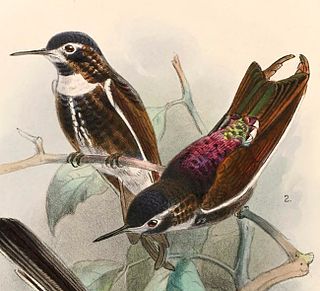 W
WThe purple-backed sunbeam is a bird species in the family Trochilidae. It is found only in Peru.
 W
WThe red-naped fruit dove is a species of bird in the family Columbidae. It is endemic to Sumba.
 W
WRuspoli's turaco, also known as Prince Ruspoli's turaco or Touraco De Ruspoli, is a species of bird in the family Musophagidae. It is endemic to southern Ethiopia where its natural habitat is subtropical or tropical dry forests. It is threatened by habitat loss.
 W
WSalvadori's seedeater or Salvadori's serin is a species of finch in the family Fringillidae. It is found only in Ethiopia. Its natural habitats are subtropical or tropical dry forest and subtropical or tropical high-altitude shrubland. It is threatened by habitat loss.
 W
WStorm's stork is a medium-sized stork species that occurs primarily in lowland tropical forests of Indonesia, Malaysia and southern Thailand. It is considered to be the rarest of all storks, and is estimated to number less than 500 wild individuals throughout its geographic range. The population has long been in decline and the primary cause is widely considered to be deforestation of its native habitat.
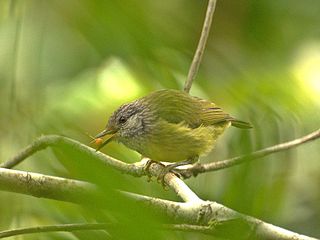 W
WThe streak-headed white-eye, also known as the streaky-headed white-eye or streak-headed ibon, is a species of bird in the family Zosteropidae. It is endemic to Sulawesi, Indonesia. Its natural habitat is subtropical or tropical moist montane forest.
 W
WThe stripe-breasted rhabdornis, also known as the stripe-breasted creeper or plain-headed creeper, is a species of bird currently placed in the starling family, Sturnidae. It is endemic to the southern and central Philippines. The Visayan rhabdornis is now usually considered a distinct species, where previously it was considered a subspecies. The grand rhabdornis of Luzon Island is sometimes regarded as a subspecies, but usually now considered a distinct species as well.
 W
WThe Sulawesi blue flycatcher is a species of bird in the family Muscicapidae. It is endemic to Indonesia. Its natural habitats are subtropical or tropical moist lowland forests and subtropical or tropical moist montane forests.
 W
WThe Sulawesi leaf warbler is a species of Old World warbler in the family Phylloscopidae. It is found only in Sulawesi Island, Indonesia.
 W
WThe Sulawesi thrush is a species of passerine bird, monotypic within the genus Cataponera in the thrush family, Turdidae. It is endemic to the island of Sulawesi in Indonesia, where it inhabits evergreen montane forests at altitudes of 1,100–2,400 m (3,600–7,900 ft). Although it has a limited range and is not a common bird, the IUCN has assessed it as being a "least-concern species".
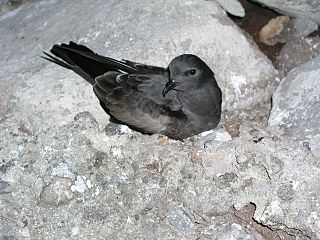 W
WTristram's storm petrel is a species of seabird in the storm petrel family Hydrobatidae. The species' common and scientific name is derived from the English clergyman Henry Baker Tristram; the species can also be known as the sooty storm petrel. Tristram's storm petrel has a distribution across the north Pacific Ocean, predominantly in tropical seas.
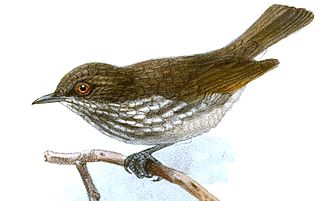 W
WThe Visayan pygmy babbler is a bird species endemic to the Philippines. It belongs to the genus Dasycrotapha. It was placed in the family Timaliidae, but found recently to be better placed in the family Zosteropidae.
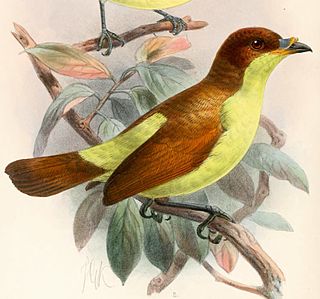 W
WThe yellow-breasted satinbird, formerly known as the yellow-breasted bird-of-paradise and also known as the silken satinbird, is a species of bird in the family Cnemophilidae. It is monotypic within the genus Loboparadisea. It is found in the New Guinea highlands. Its natural habitats are subtropical or tropical moist lowland forest and subtropical or tropical moist montane forest. It is threatened by habitat loss.
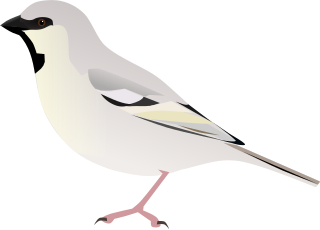 W
WZarudny's sparrow, also known as the Asian desert sparrow, is a species of bird in the sparrow family Passeridae, which occurs in Uzbekistan, Turkmenistan, and formerly in Iran. This species has historically been classified as a subspecies of the desert sparrow, which is otherwise restricted to Africa. However, the species has a number of differences with the African species, including very similar plumage in adult males and females, which suggests this species is distinct enough to be considered separate, and possibly not most closely related to the African birds. Consequently, Zarudny's sparrow is treated as a separate species by BirdLife International, the IOC World Bird List, and the Handbook of the Birds of the World Alive.